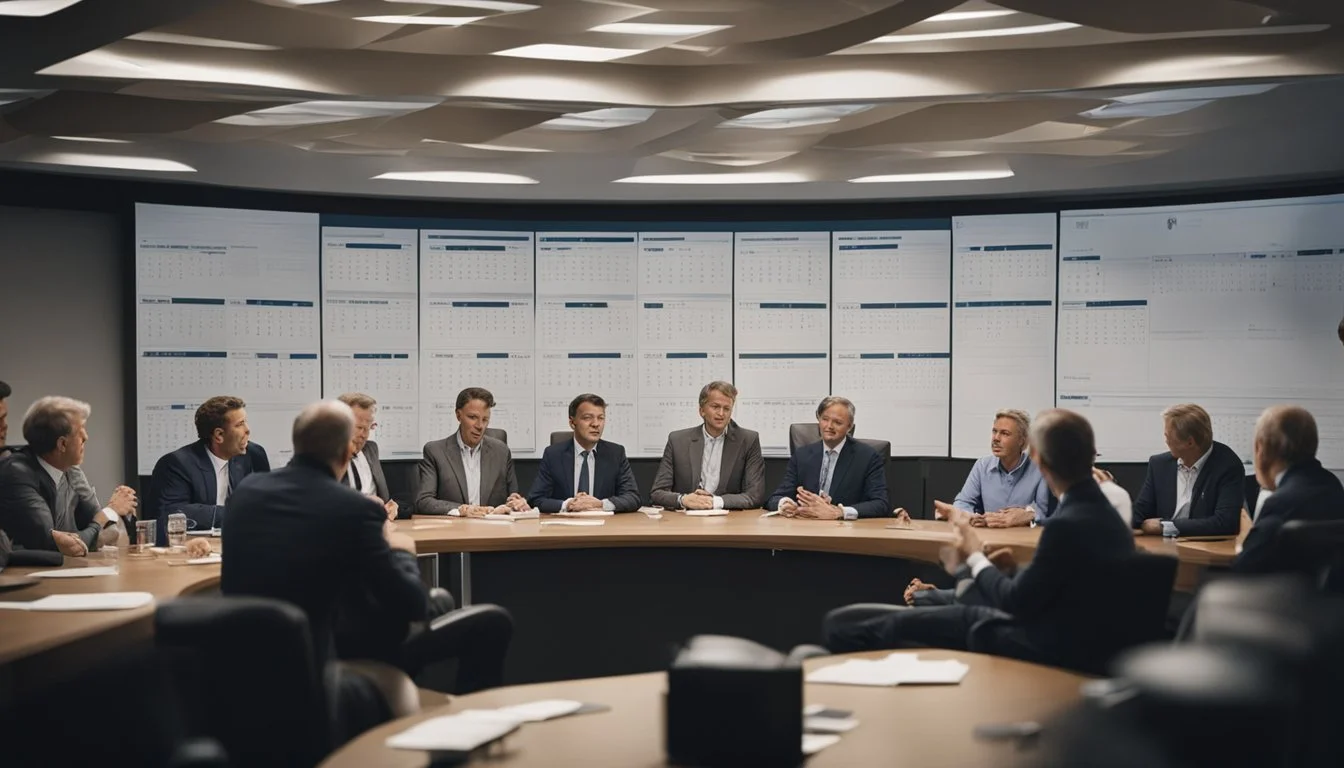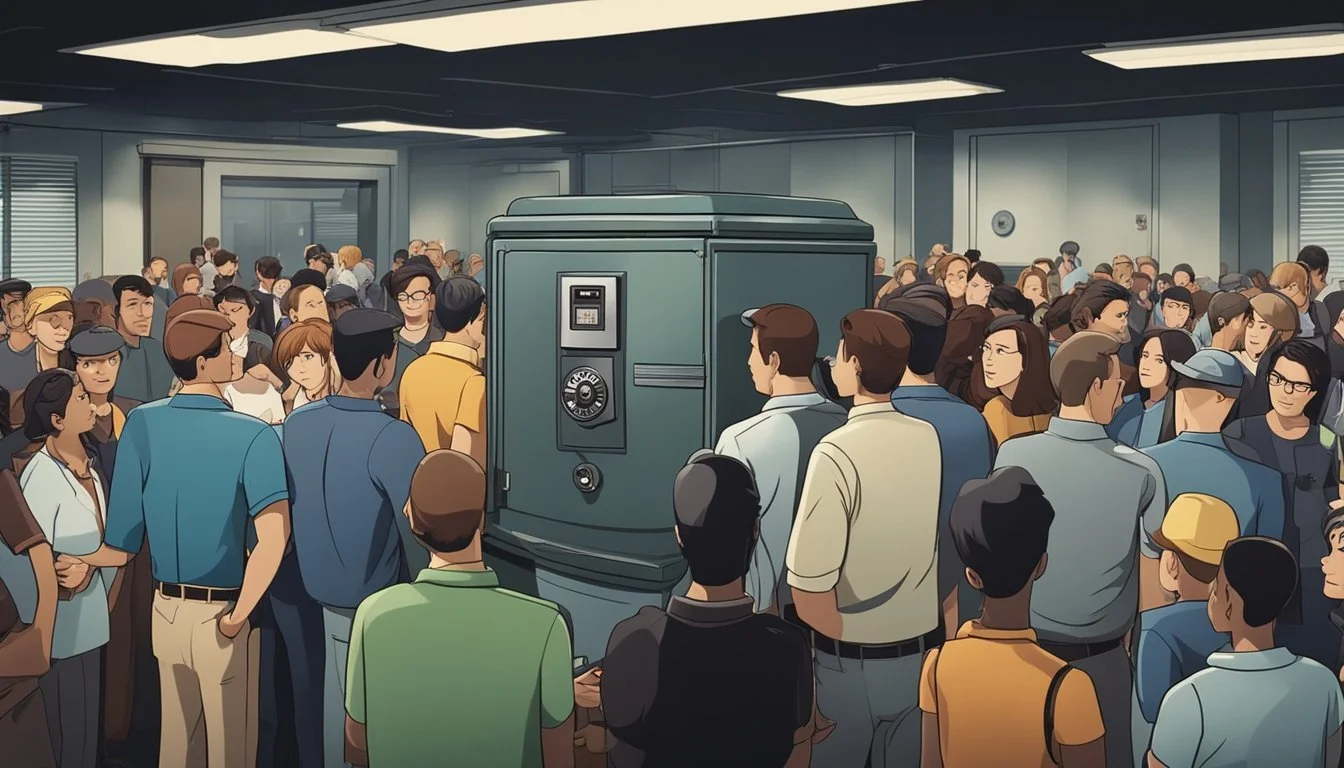Hearts and Minds Documentary Faces Political Pressure and Release Delays
"Hearts and Minds," Peter Davis's Oscar-winning documentary, faced significant political pressure that delayed its release in 1974. The film's critical examination of the Vietnam War challenged prevailing narratives and sparked controversy in the United States.
The documentary's unflinching portrayal of the conflict and its impacts on both Vietnamese civilians and American soldiers made it a target for those who sought to suppress dissenting views on the war. Despite attempts to block its distribution, "Hearts and Minds" eventually reached audiences, becoming a pivotal work in shaping public discourse about the Vietnam War.
The film's journey to the screen illustrates the tensions between political interests and artistic expression during a tumultuous period in American history. Its eventual release and subsequent acclaim demonstrated the power of documentary filmmaking to influence public opinion and contribute to national debates on war and foreign policy.
Historical Context of 'Hearts and Minds'
'Hearts and Minds' emerged during a pivotal period of global tension and conflict. The film's creation and reception were deeply intertwined with the complex political and social landscape of the Cold War era.
The Cold War Epoch
The Cold War shaped international relations for decades after World War II. The United States and Soviet Union engaged in a struggle for global influence, extending beyond military might to ideological battles. This conflict permeated politics, culture, and media worldwide.
Propaganda became a crucial tool for both superpowers. They sought to sway public opinion domestically and internationally. The U.S. government actively promoted its vision of democracy and capitalism against Soviet communism.
This ideological warfare influenced film, literature, and news media. It created an environment where documentaries like 'Hearts and Minds' could have significant political impact.
Vietnam War and Public Opinion
The Vietnam War deeply divided American society. Initial support for U.S. involvement waned as the conflict dragged on. Media coverage brought the war's brutal realities into American homes.
Public protests against the war grew in size and intensity. The anti-war movement gained momentum, especially among young people and on college campuses. This shift in public opinion created a receptive audience for critical examinations of the war.
Television played a crucial role in shaping perceptions. For the first time, a war was broadcast directly into living rooms. This immediate, visceral connection to the conflict had a profound impact on public sentiment.
Hearts and Minds as a Propaganda Tool
'Hearts and Minds' entered this charged atmosphere as a powerful critique of U.S. involvement in Vietnam. The film's title referenced President Lyndon B. Johnson's statement about winning "the hearts and minds" of the Vietnamese people.
The documentary used interviews, newsreels, and combat footage to construct its narrative. It presented a stark contrast between official statements and the realities on the ground. This approach challenged the government's portrayal of the war.
'Hearts and Minds' became both a product and a tool of propaganda. It aimed to sway public opinion against the war. The film's release in 1974, shortly after U.S. military withdrawal from Vietnam, amplified its impact and controversy.
Political and Diplomatic Challenges
Political leaders faced complex dilemmas during the Vietnam War era. Diplomatic efforts played a crucial role in shaping the conflict's trajectory. The war's impacts reverberated through domestic and international politics.
Leaders' Dilemmas During the War
President Lyndon B. Johnson grappled with escalating U.S. involvement in Vietnam. He faced pressure to demonstrate American strength against communism. At the same time, he worried about the war's growing unpopularity at home.
Johnson's administration struggled to balance military objectives with political realities. The president feared appearing weak on communism could cost him re-election. This led to gradual escalation rather than full commitment or withdrawal.
The administration's "credibility gap" grew as official optimism clashed with grim war reports. This eroded public trust and fueled anti-war sentiment.
The Role of Diplomacy in Conflict
Diplomatic efforts aimed to resolve the Vietnam conflict through negotiations. The United States engaged in peace talks with North Vietnam in Paris starting in 1968.
These negotiations were complex and often stalled. Both sides used diplomatic maneuvers to gain advantage on the battlefield. The U.S. sought "peace with honor" to avoid the appearance of defeat.
International diplomacy also played a role. The Soviet Union and China provided support to North Vietnam, complicating U.S. efforts. American diplomats worked to manage Cold War tensions while pursuing their Vietnam objectives.
Impacts on Domestic and International Politics
The Vietnam War deeply divided American society. Anti-war protests grew in size and intensity, especially on college campuses. This social unrest influenced political debates and election outcomes.
The conflict strained the Democratic Party, contributing to its loss in the 1968 presidential election. It also shifted public opinion on foreign policy, fostering skepticism about military interventions.
Internationally, the war affected America's global standing. Some allies questioned U.S. judgment and power. The conflict's outcome emboldened communist movements in other countries.
The war's political aftermath shaped U.S. foreign policy for decades. It led to the "Vietnam Syndrome" - a reluctance to engage in foreign military interventions without clear objectives and public support.
Sociological and Ideological Aspects
The Vietnam War's societal impact extended far beyond the battlefield, shaping public perceptions and cultural narratives. This section explores the complex interplay between military strategy, social dynamics, and ideological narratives during the conflict.
Winning Hearts and Minds in Societies
The "hearts and minds" strategy aimed to gain support from Vietnamese civilians. U.S. forces distributed food, built schools, and provided medical care to local communities. These efforts sought to counter Viet Cong influence and establish trust.
The strategy faced challenges due to cultural misunderstandings and language barriers. Many Vietnamese viewed American presence with suspicion, limiting the effectiveness of goodwill gestures.
Propaganda played a crucial role on both sides. The U.S. used radio broadcasts and leaflets to promote its message, while the Viet Cong relied on personal connections and grassroots networks.
Patriotism and Public Diplomacy
The war sparked intense debates about patriotism in American society. Those supporting the war often viewed it as a necessary stand against communism. Critics argued that true patriotism meant questioning government decisions.
Public diplomacy efforts aimed to sway international opinion. The U.S. hosted foreign journalists and diplomats to showcase its technological superiority and democratic values.
Media coverage played a pivotal role in shaping public perception. Television brought graphic images of combat into American homes, influencing popular support for the war.
Racism and Violence in the War Narrative
Racial tensions permeated the conflict. African American soldiers faced discrimination within military ranks while fighting for a country that denied them full civil rights at home.
The use of derogatory terms for Vietnamese people became commonplace among some U.S. troops, reflecting and reinforcing racist attitudes.
Atrocities committed by both sides fueled anti-war sentiment. The My Lai massacre, where U.S. soldiers killed hundreds of civilians, shocked the American public and damaged the military's image.
Media portrayals often reinforced stereotypes, depicting Vietnamese as either helpless victims or faceless enemies. This simplification ignored the complex realities of Vietnamese society and culture.
Media Influence and Propagation
Media plays a pivotal role in shaping political attitudes and public opinion. Its power extends beyond borders, influencing both domestic and international perspectives on government policies and military actions.
Usage of Media for Political Messaging
The United States Information Agency (USIA) utilized various media channels to disseminate political messages during the Cold War era. Radio broadcasts, publications, and films were strategically employed to promote American ideals and counter Soviet propaganda.
Television emerged as a powerful tool for political communication. Government officials leveraged news broadcasts and interviews to shape public perception of military operations. Press briefings and carefully curated footage aimed to present a positive image of U.S. involvement in foreign conflicts.
Social media platforms have revolutionized political messaging in recent years. Politicians and government agencies now use these channels for direct communication with the public, bypassing traditional media gatekeepers.
Impact on American and Global Public Opinion
Media coverage significantly influenced American attitudes towards military interventions. News reports from Vietnam, often showing graphic footage, swayed public opinion against the war. This shift demonstrated the media's capacity to shape domestic support for foreign policy decisions.
Internationally, U.S. media efforts aimed to win hearts and minds in regions of conflict. The USIA's Voice of America broadcasts reached millions worldwide, promoting American values and perspectives. However, the effectiveness of these propaganda efforts varied across different cultures and political contexts.
Media fragmentation and the rise of alternative news sources have complicated efforts to control narratives. The proliferation of online platforms has led to increased exposure to diverse viewpoints, potentially influencing public opinion in unpredictable ways.
Repercussions and Legacy
The release of "Hearts and Minds" sent shockwaves through American politics and society, reshaping perspectives on the Vietnam War and US foreign policy for decades to come.
Long-Term Effects on US Foreign Policy
The documentary's critical portrayal of US involvement in Vietnam influenced future military interventions. Policymakers became more cautious about engaging in overseas conflicts, wary of public backlash. The "Vietnam Syndrome" took hold, making leaders hesitant to commit ground troops abroad.
This shift was evident in subsequent conflicts. During the Gulf War, the US emphasized swift action and limited engagement. In Somalia, public opinion quickly soured after casualties, leading to a rapid withdrawal.
The film also sparked debates about media's role in shaping public opinion on foreign policy. It highlighted the power of visual storytelling in influencing public sentiment and political decision-making.
Historians' Perspectives on 'Hearts and Minds'
Scholars have debated the film's impact and accuracy since its release. Many praise its emotional power and ability to humanize the Vietnamese experience. Critics argue it oversimplifies complex issues and presents a biased view.
Some historians credit "Hearts and Minds" with helping shift the narrative around the Vietnam War. It challenged the notion of American exceptionalism and forced a reevaluation of US motivations and actions.
Others note its influence on documentary filmmaking techniques. The film's use of interviews, archival footage, and juxtaposition set new standards for the genre.
Debates continue about the film's portrayal of US soldiers and its impact on veteran experiences. Some argue it unfairly vilified servicemembers, while others see it as an important critique of military leadership and policy.
Contemporary Reflections
The "hearts and minds" approach has faced significant challenges in recent conflicts. Its implementation and effectiveness remain subjects of debate among policymakers and military strategists.
Lessons from Iraq and Afghanistan
The Iraq and Afghanistan wars provided stark lessons on the complexities of winning hearts and minds. In Iraq, initial goodwill after Saddam Hussein's removal quickly eroded due to security breakdowns and cultural misunderstandings. Coalition forces struggled to balance military objectives with civilian needs.
Afghanistan presented similar challenges. Despite billions spent on development projects, Taliban influence persisted in rural areas. Language barriers and tribal politics hindered relationship-building efforts.
Both conflicts highlighted the importance of local partnerships and cultural sensitivity. They also demonstrated the limits of external actors in shaping deeply rooted societal dynamics.
Hearts and Minds in Modern Conflicts
Recent conflicts have prompted a reevaluation of hearts and minds strategies. Social media and instant communication have transformed the information landscape. Adversaries can now rapidly counter narrative efforts.
Humanitarian aid remains a key tool, but its effectiveness depends on security and local perceptions. Military leaders increasingly emphasize the need for long-term engagement and sustainable development.
Counterinsurgency doctrine has evolved to prioritize population-centric approaches. However, critics argue that such strategies often fall short in practice. The enduring challenge lies in aligning tactical actions with strategic goals while navigating complex cultural and political terrain.
Legal and Institutional Challenges
The release of "Hearts and Minds" faced significant hurdles related to legal processes and institutional barriers. These challenges impacted both the film's distribution and public access to information about its production and content.
Lawsuits and Freedom of Information
Multiple lawsuits were filed against the producers of "Hearts and Minds" by individuals featured in the documentary. These legal actions cited privacy concerns and alleged misrepresentation. The filmmakers had to navigate complex legal processes to defend their work and maintain its integrity.
Freedom of Information Act requests were submitted to obtain government records related to the film's production and content. However, many of these requests were initially denied or heavily redacted, citing national security concerns. This lack of transparency fueled speculation about potential government interference in the film's release.
Institutional Access and Public Records
Academic institutions and libraries faced difficulties in acquiring copies of "Hearts and Minds" for their collections. Some universities reported barriers to obtaining institutional access through traditional channels.
Oxford Academic and other scholarly platforms encountered challenges in making the film available to their subscribers. IP-based access systems and Shibboleth/Open Athens technology, commonly used for academic resource distribution, struggled to accommodate the unique nature of film content.
Society members of various academic and professional organizations advocated for improved access to the documentary. They argued for its historical and educational value, pushing institutions to overcome bureaucratic obstacles.
Access and Utilization of Information
Information access and utilization play crucial roles in democratic participation and decision-making processes. Digital technologies have transformed how information is managed and disseminated, while librarians and administrators serve as key facilitators in this ecosystem.
Digital Age and Information Management
The digital era has revolutionized information access and management. Single Sign-On systems simplify access to multiple platforms using one set of credentials. Institutional subscriptions provide broad access to academic and professional resources. Remote access enables users to retrieve information from anywhere, breaking geographical barriers.
Personal accounts allow users to save searches, set up email alerts, and manage preferences. Usage statistics help institutions track and optimize resource utilization. Library card numbers often serve as access keys to digital collections and databases.
Role of Librarians and Administrators
Librarians and administrators play a vital role in facilitating information access and utilization. They manage institutional accounts, negotiate subscriptions, and ensure seamless remote access for users.
These professionals curate digital collections, organize resources, and provide guidance on effective information retrieval. They offer training on database usage and research methodologies. Librarians assist in activating subscriptions and troubleshooting access issues.
Administrators analyze usage statistics to make informed decisions about resource allocation. They implement authentication systems like Single Sign-On to enhance user experience. Librarians and administrators also promote information literacy, helping users navigate the complex digital information landscape.
Conclusion: Understanding 'Hearts and Minds' Today
The impact of "Hearts and Minds" extends far beyond its initial release. This documentary continues to shape discussions about war, media influence, and political accountability.
Political scientists study the film as a case study in public opinion shaping. Its portrayal of the Vietnam War challenges viewers to critically examine government narratives during conflicts.
The phrase "hearts and minds," popularized by President Lyndon B. Johnson, has become a key concept in modern counterinsurgency strategies. Military leaders now recognize the importance of winning civilian support in addition to military victories.
Coercion and persuasion remain central themes in political discourse. "Hearts and Minds" serves as a reminder of the power of media to sway public sentiment and the ethical responsibilities that come with it.
The film's exploration of propaganda techniques remains relevant in today's digital age. Social media and online platforms have created new battlegrounds for influencing hearts and minds globally.
As conflicts continue around the world, "Hearts and Minds" offers valuable lessons. It underscores the importance of understanding local cultures, the human cost of war, and the complexities of international interventions.








